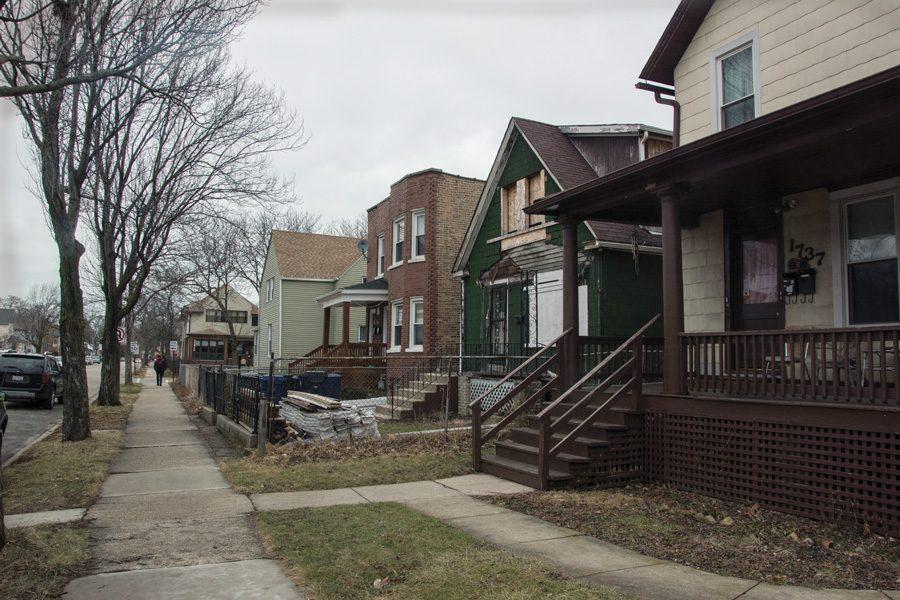Evanston Health Department study reveals health inequities in 5th Ward
A study from the Evanston Health Department finds life expectancy in the 5th ward is five to 13 years shorter than other wards.
November 9, 2022
A health assessment in July revealed that residents of the historically Black 5th Ward have a life expectancy five to 13 years shorter than residents in local predominantly white neighborhoods.
Every five years, the Health and Human Services Department conducts the Evanston Process for Local Assessment of Needs (EPLAN) to holistically look at the health of the city and plan for specific areas that need improvement.
Health department Community Health Specialist Kristin Meyer conducted the study and said data was gathered based on census tracts rather than by ward. Census tracts are small subdivisions of the county used to collect census data.
Evanston currently has 19 census tracts as of 2020, with one tract corresponding closely with the 5th Ward. The tract had a life expectancy of 75.5 years, as compared to 88.8 years in the tract roughly representing the 7th Ward.
“If you only looked at (Evanston’s) average life expectancy, it would be higher than the U.S. average,” Meyer said. “But when you start to drill down by geography, race and ethnicity, we see a really different picture emerge.”
Meyer said the study highlights a pattern of concentrated wealth and privilege in non-Latine white populations in the Northern and Eastern portions of Evanston. She said Western Evanston shows economic and health disadvantages, particularly in the 5th Ward, which has been historically redlined.
Director of Community Leadership at the Evanston Community Foundation Karli Butler said herself and others were shocked when they first heard the study’s results at a data walk hosted by the city and Evanston Cradle to Career.
“You could hear people like ‘Wow.’ There were reactions of, ‘This is terrible,’” Butler said. “There was a sense of urgency to address this. It’s not right, it’s really upsetting.”
The health department has conducted several focus groups, data walks and other community forums to receive public input on the data since its release. Meyer said the health department also partnered with the ECF during the last few months, to hear what people thought was needed to improve health and well-being across the city.
While Meyer said the Health and Human Services Department is reaching out to the entire community, she said it’s concentrated on soliciting input from the 5th Ward.
“Because the findings center around disproportionate harm, (5th ward residents) need to be at the center of imagining the solutions,” Meyer said. “They are the experts on the problem because they’re living it, so it was our responsibility to take the data to them so they can have ownership over their own narrative.”
The health department found three overarching priorities to help address these disparities.
The first priority is mental and emotional well-being, which Meyer said must include acknowledging collective trauma as a result of the COVID-19 pandemic, as well as the uptick of community violence seen in recent years.
The second is climate resilience, recognizing that the climate crisis is a public health issue and its disproportionate impact on people who are low income, have disabilities or are housing insecure.
“A big finding of this report is how much the environment and community around us shapes our health,” Meyer said. “Our choices are shaped by the resources we have access to and those resources are different depending on how much income we have.”
Racial inequality is the third priority. Ald. Bobby Burns (5th) told The Daily health inequalities and income inequities have long correlated with race.
Burns said he’s glad the assessment’s public data is making people aware of these disparities
“It’s an important time for change because people are alert and ready to make a difference,” Burns said. “We have an opportunity to seize and create the type of change that we’ve needed for a while now.”
Meyer said Health and Human Services plans to make a recording of some of the EPLAN findings, particularly connecting the patterns of health inequity to Evanston’s history of redlining, in the next few months.
She added the hope is to disseminate the results more broadly, beyond participants of city-organized meetings.
“The problem of desegregation doesn’t just live in the past,” Meyer said. “When you drill down to a neighborhood level we see these patterns where health falls on those geographical and racial lines so this presentation will try to tell that story.”
Email: [email protected]
Twitter: @ellajeffriess
Related Stories:
—Evanston youth speak out on mental health, school safety in community town hall
—Community Data Walk shows health and quality of life inequalities in Evanston
—Grounding for Public Service Club explores relationship between Northwestern and Evanston


